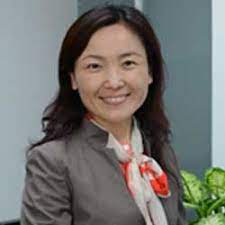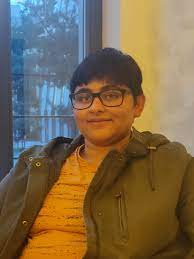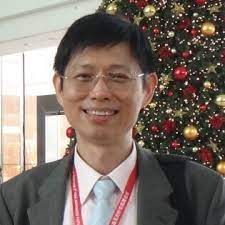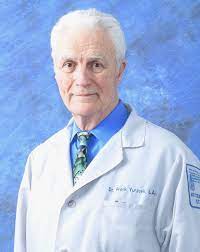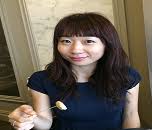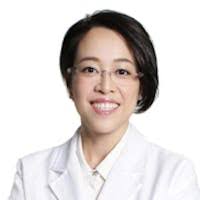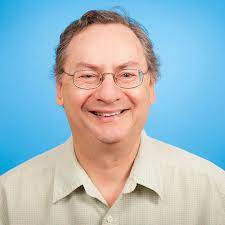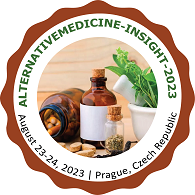Scientific Sessions
Track 1: Alternative Medicine
Alternative treatment plans proportion in not unusual place that they live outdoor of scientific technological know-how and as an alternative depend on pseudoscience. Traditional practices become "opportunity" while used outdoor their unique settings and without right medical clarification and proof. Frequently used derogatory phrases for applicable practices are new age or pseudo- medication, with little difference from quackery
Track 2: Acupuncture
Acupuncture, which involves inserting tiny needles into the body, is both a kind of complementary treatment and a crucial component of traditional Chinese medicine (TCM). Despite being used to treat a variety of diseases, it is most frequently used to relieve pain. Acupuncture is typically only used in conjunction with complementary therapies. Between China (10) and the United States, there were considerable disparities in the average number of patients treated each hour (1.2). The usage of Chinese herbs is common. There are several acupuncture techniques that employ very distinct ideas.
Track 3: Ayurveda Medicine
Over the past two thousand years, ayurvedic treatments have changed and developed. Laxatives, enemas, massage, yoga, meditation, herbal remedies, specific diets, and medicinal oils are some examples of therapies. Ayurvedic remedies are frequently made of intricate plant mixtures, minerals, and metals (perhaps under the influence of early Indian alchemy or rasashastra). Surgical procedures including rhinoplasty, kidney stone removal, sutures, and the removal of foreign items were also included in the early Ayurvedic writings.
Track 4: Unani System of Medicine
The Unani System of Medicine is a thorough medical approach that carefully considers the many health and illness states. It offers healthcare that is promotional, preventative, curative, and rehabilitative. The system's foundational ideas, diagnostic procedures, and therapeutic approaches are founded on rational scientific theories and holistic notions of health and healing .The emphasis on the physical, mental, and spiritual well-being is part of its holistic perspective on the individual in connection to his environment. When diagnosing and treating illnesses using natural treatments made mostly from plants, the patient's temperament (Mize) is given significant weight.
Track 5: Aromatherapy
Aromatherapy, which promises to enhance both psychological and physical wellbeing, is based on the use of aromatic materials, such as essential oils and other scent compounds. It is provided as either an alternative type of medicine or as a complimentary therapy, the first of which refers to using it in place of established, scientifically proven therapies.
Track 6: Photochemistry
The study of phytochemicals, or substances originating from plants, is known as photochemistry. The vast majority of secondary metabolites discovered in plants have complex structures, and phytochemists work to explain these chemicals' roles in human and plant biology as well as their manufacture. Plants produce phytochemicals for a variety of purposes, including defence against pests and disease. Although there are many different types of molecules found in plants, the majority of them fall into one of four primary biosynthetic classes: alkaloids, phenylpropanoids, polypeptides, and terpenoids.
Track 7: Modern Pharmacognosy
Pharmacognosy, which is based on a macroscopic and microscopic inspection of unprocessed pharmaceuticals, is the study of crude remedies of plant and animal origin as well as their authenticity and quality control. The term "Pharmacognosy," coined in 1811 by Austrian physician Schmidt, was first used by Seydler in Analecta Pharmacognostica in 1815.
From drug identification, such as the separation of active ingredients, to more recently, biological activity research, the emphasis and scope of study in Pharmacognosy have drastically changed. Research in ethnopharmacology, ethnomedicine, and ethnobotany has grown to be an important part of pharmacognosy.
Track 8: Traditional Medicine
Traditional medicine is defined as the body of knowledge, abilities, and practices that are derived from ideas, beliefs, and experiences that are unique to different cultures and are used to preserve health as well as to prevent, diagnose, treat, or improve physical and mental disorders. Many books and recordings of theoretical ideas and practical skills support certain traditional medical systems, while others are passed down verbally from one generation to the next. The majority of people have relied on traditional medicine to meet their basic medical requirements for a long time in many parts of the world. Throughout the previous few decades, traditional medicine has become more and more well-liked. These methods have not only been used in basic healthcare
-
Traditional Korean Medicine
-
Traditional Japanese Medicine
-
Traditional Chinese Medicine
-
Traditional African Medicine
-
Traditional Indian Medicine
-
Traditional Medicine and Their Authentication
Track 9: Mind Therapies
Mind-body therapies aim to increase the beneficial effects of the mind on the body. Behavioural, psychological, social, expressive, and spiritual methods are all used in these procedures.
-
Meditation
-
Prayer
-
Cognitive behavioural therapy
-
Guided imagery
-
Biofeedback
-
Yoga
Track 10: Current Research in Alternative Medicine:
Further, several of the top-rated US hospitals and academic medical centers bid “natural healing alternatives” such as Chinese herbal therapy, acupuncture and acupressure, massage, homeopathy, meditation, yoga, aromatherapy, art therapy, Reiki, guided imagery, and hypnotherapy. Abundant pharmaceutical organizations have reviewed the potential for making new medications from traditional remedies in Asian market. Health consultants and legislatures of different countries have engaged an active interest in providing standardized botanical medicines, Alternative Medicine represents an important share of the pharmaceutical market, and while China's yearly home grown medication establishment is worth US $48 billion. Alternative Medicine is rapidly creating since later of 1990s.
Track 11: Naturopathic Medicine:
Naturopathy or naturopathic medicine is a formula of alternative medicine. It employs an assortment of pseudoscientific practices branded as "natural", "non-invasive", or endorsing "self-healing". The practices of naturopaths, the practitioners of naturopathic medicine, vary extensively and are tough to generalize. Treatments range from outright quackery like homeopathy, to broadly accepted practices like psychotherapy. The ideology and procedures of naturopathy are created on vitalism and folk medicine, rather than evidence-based medicine (EBM), although some practitioners may use methods supported by EBM.
Track 12: Natural product development:
Expansion of Natural Product Manufacturing Processes: Phytochemicals to meet an increasing demand for shorter time and reduced cost in developing their manufacturing processes, a systematic procedure is developed for generating flow sheet substitutes that transform the harvested plants into desired products. Another significant advantage of natural products is that they obligate a biological history. It is measured that because of the structural and biological diversity of their constituents, terrestrial plants offer a sole and renewable resource for the determining of potential new drugs and biological entities
Track 13: Complementary Medicine
Complementary medicine is treatments that is used along with measure with preventive administration but are not treated to be standard managements. It is used when these ways are used instead of the traditional medicine. There are types of complementary health are Cupping, Yoga, Tai Chi, Qi Gong, Chiropractic, Special Diets, Progressive Relaxation, Crystal healing, Osteopathic Manipulation, Meditation, Massage
Track 14: Holistic nutrition:
The principles of holistic nutrition is that one’s fitness is an appearance of the complex interplay among the physical and chemical, mental and emotional, as well as spiritual and environmental aspects of one’s life and being. As such, experts who are capable in holistic nutrition approach health and healing from a whole-person perception. By nutritional training as a primary tool, holistic nutrition professionals highlight the building of health by approaching every person as a unique individual. This entails fully engaging the individual in their health recovery procedure and honouring their innate wisdom by working in an empowering and cooperative manner to chart a course to optimal health.
Track 15: Chiropractic Technique
Chiropractic is a form of elective medicine that treats spinal problems that are mechanical in nature and relate to the musculoskeletal system of the body.One of the important chiropractic techniques used for spinal rope modification is the Gonstead approach. It mostly includes back massage and control, which aid in the alteration of the spine and associated tissues. With the exception of treating lower back pain, chiropractic care is not effective for treating any illness. Chiropractic activation technique is an instrument assisted therapy approach used to treat migraines, neck pain, and back pain.
Track 16: Pharmacognosy
Pharmacognosy is the study of plants or additional natural sources as a probable source of drugs. The American Society of Pharmacognosy outlines Pharmacognosy as "the study of the physical, chemical, biochemical, and biological properties of drugs, drug substances, or potential drugs or drug substances of natural source as well as the exploration for new drugs from natural sources". Pharmacognosy" was used to designate the division of medicine or commodity sciences (Warenkunde in German) which bonds with drugs in their crude, or unprepared, form. Crude drugs are the dried, unprepared material of plant, animal or mineral origin, used for medicine.
